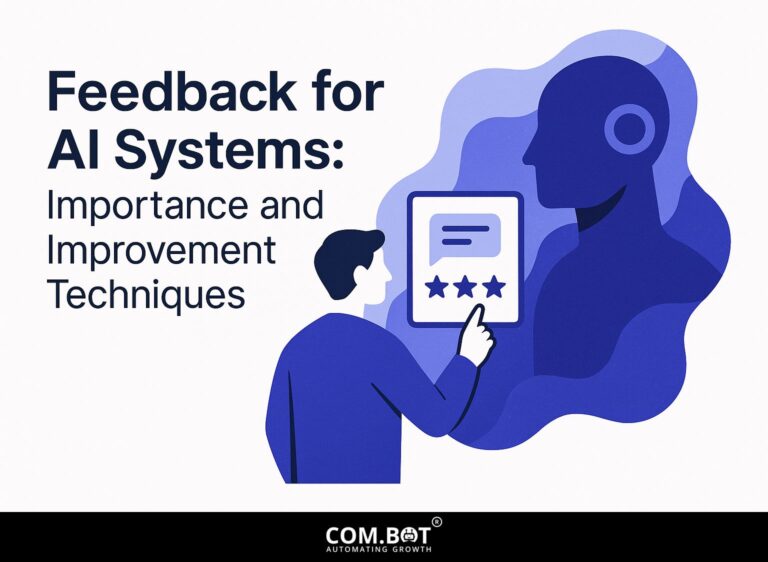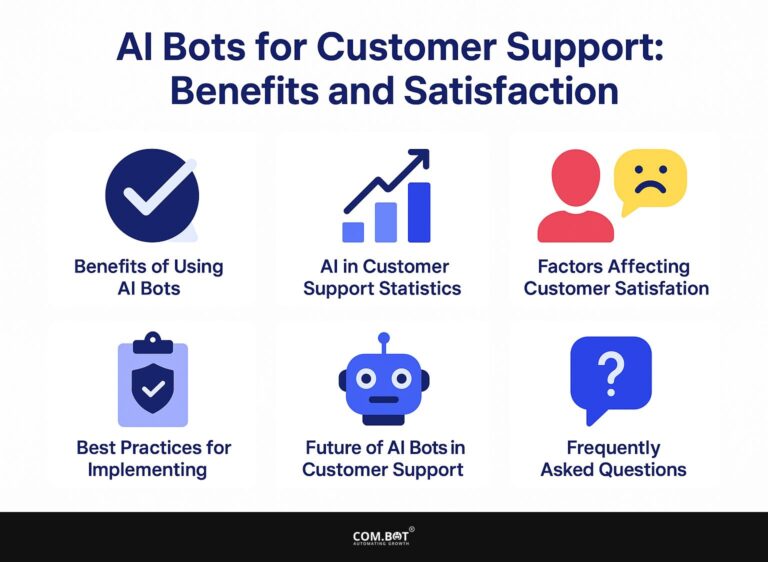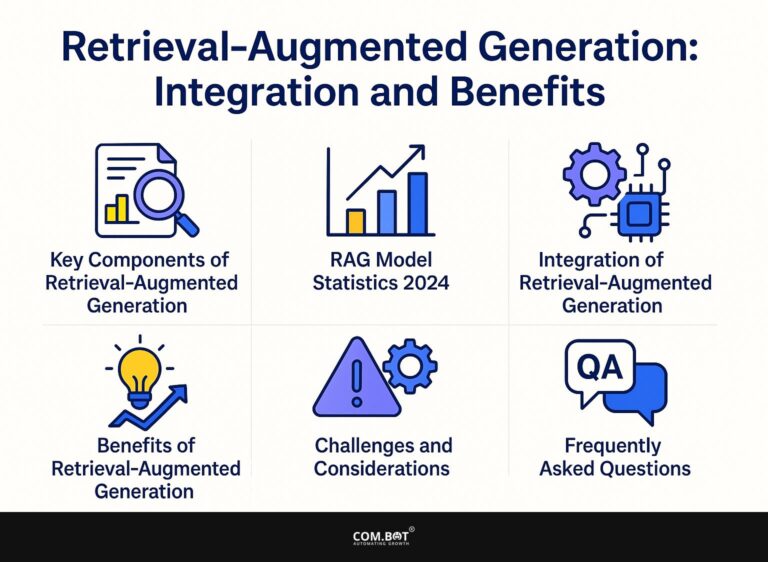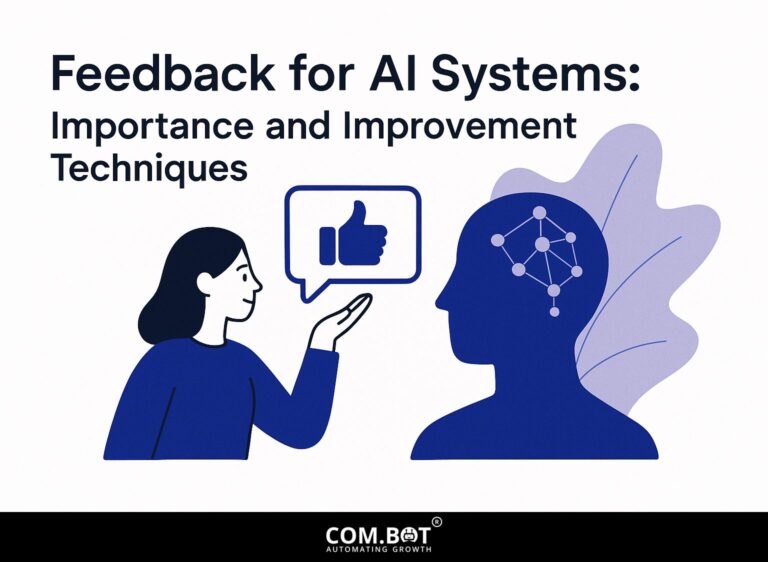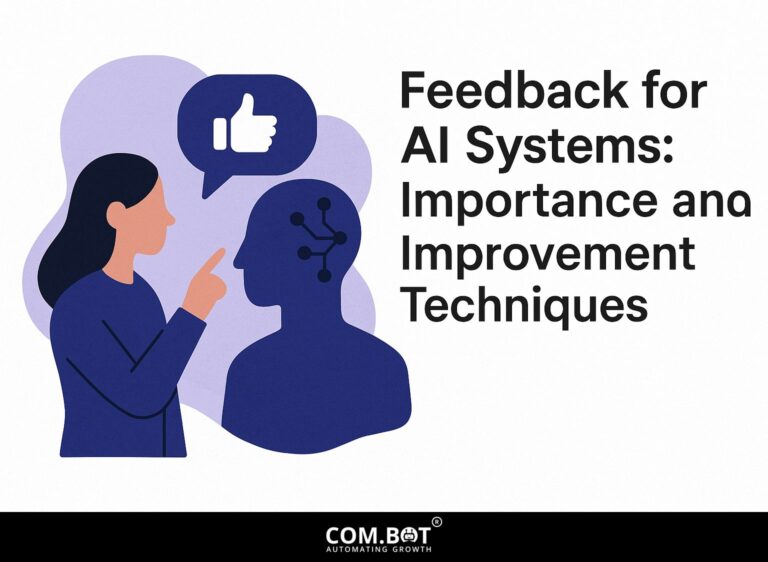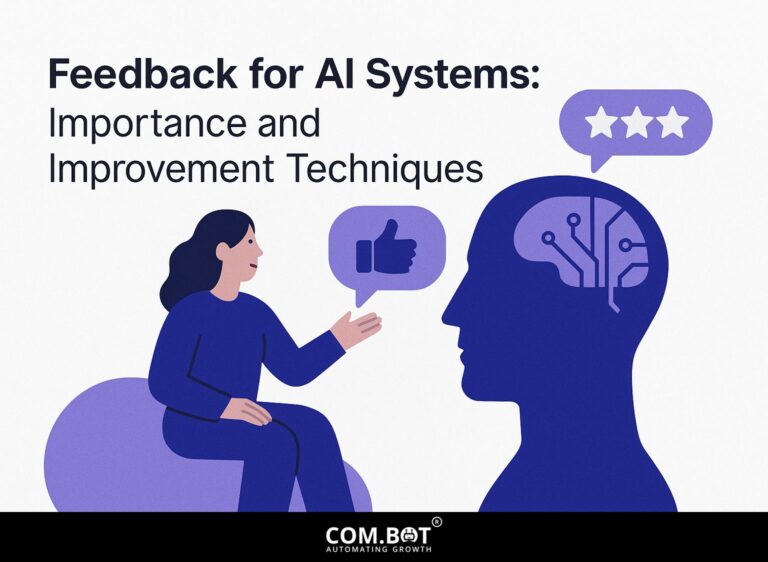Feedback for AI Systems: Importance and Improvement Techniques
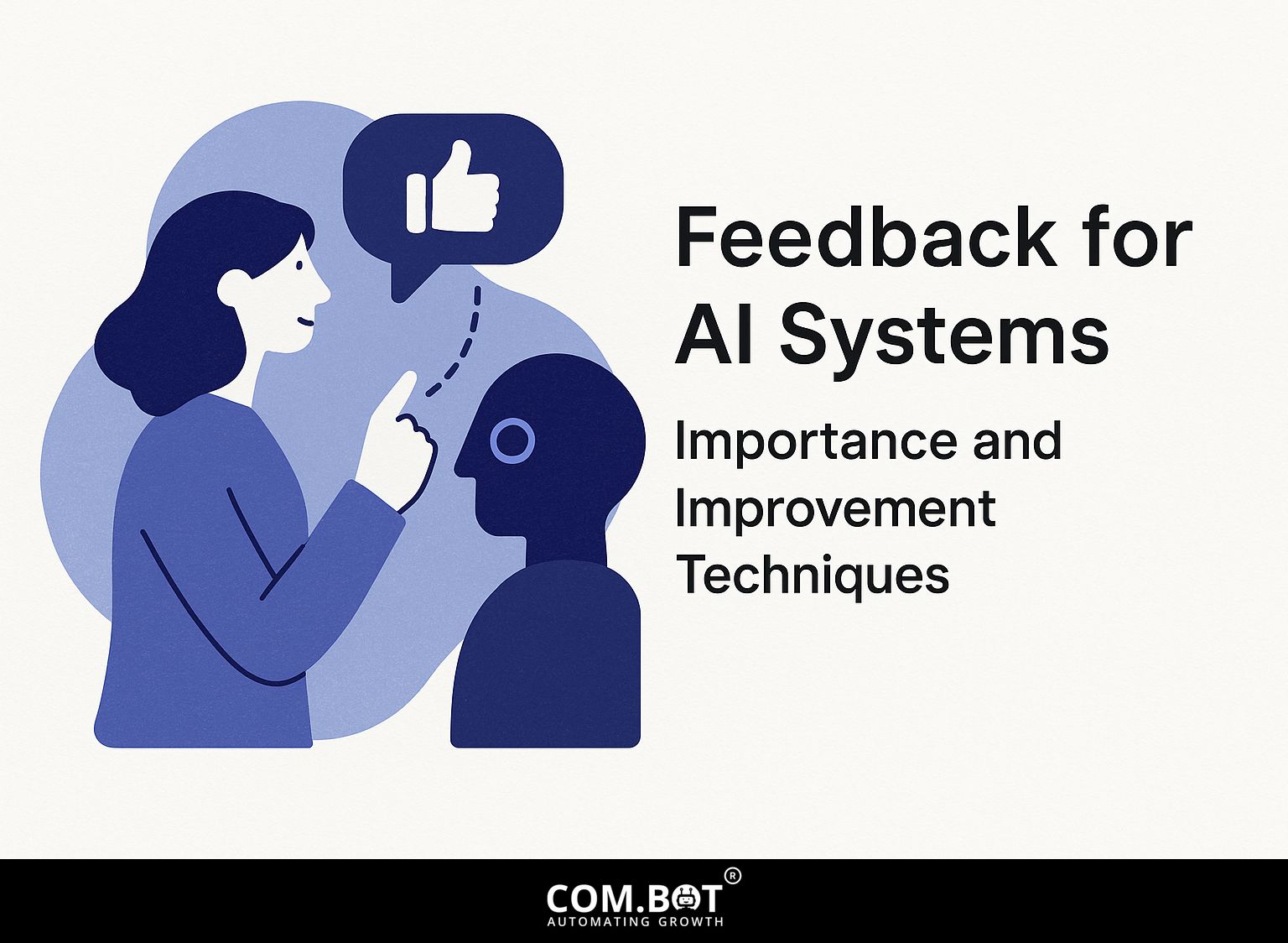
As artificial intelligence quickly advances, using **human feedback** is essential for improving **AI systems**. Companies like **Amazon** and platforms such as **Label Studio** are using **reinforcement learning** methods to build useful **feedback loops** that improve their **training data**. This article looks at how important feedback is in AI and discusses ways to improve systems to make sure they develop well and follow ethical guidelines. Come with us to learn about this key part of AI development.
Key Takeaways:
- 1 The Impact of AI Feedback on Employee Behavior
- 2 Types of Feedback in AI Systems
- 3 Importance of Feedback for AI Improvement
- 4 Techniques for Collecting Feedback
- 5 Implementing Feedback Loops
- 6 Challenges in Feedback Implementation
- 7 Frequently Asked Questions
- 7.1 What is the importance of feedback for AI systems?
- 7.2 How does feedback help in improving AI systems?
- 7.3 What are some techniques for gathering feedback for AI systems?
- 7.4 Why is it important to have a diverse set of feedback for AI systems?
- 7.5 How can AI systems make sure the feedback they get is good?
- 7.6 What are the advantages of regularly asking for feedback on AI systems?
Definition and Overview
Feedback in AI means how AI systems learn from user interactions and change their outputs based on those interactions.
User feedback is essential in refining AI models. When someone mentions a response is wrong, adding this feedback to the training data can improve the model’s answers later.
Tools like Google’s AutoML allow developers to manually label examples and adjust model performance based on user behavior. Implementing feedback loops-where user ratings, corrections, or suggestions are collected-can lead to continuous improvement, ensuring that AI systems evolve and become more aligned with user expectations over time.
Importance of Feedback in AI
Feedback helps AI models get better, fix mistakes, and produce more accurate results in tasks like recognizing emotions in text and self-driving cars.
In healthcare, patient results from AI diagnostics can improve by using regular input from doctors and nurses, helping models learn from actual data. Understand how feedback mechanisms enhance AI systems to achieve better diagnostic accuracy.
In e-commerce, product recommendation feedback helps improve algorithms to better suit user preferences.
Using tools like Slack for instant feedback or sending out user surveys can greatly make these processes better.
Active listening tools like UserVoice can also integrate user suggestions directly into the development cycle, ensuring AI solutions evolve based on genuine user experiences.
The Impact of AI Feedback on Employee Behavior
The Impact of AI Feedback on Employee Behavior
AI Feedback Impact: Feedback Impact Statistics
The Impact of AI Feedback on Employee Behavior examines how AI and leader feedback affect employee feelings and behavior. The data indicates distinct differences between feedback from leaders and AI, affecting feelings of shame, self-efficacy, and bias perception.
Feedback Impact Statistics highlight that feelings of shame are slightly higher when feedback is given by leaders (3.47) compared to AI (3.05). This suggests that AI may be perceived as more neutral, reducing the emotional intensity associated with feedback. However, confidence seems to drop more with feedback from AI (2.46) than with feedback from leaders (2.83). This suggests that AI might unintentionally lower employee confidence more than feedback from people.
- Notably, 30.8% increase in biased judgment occurs when interacting with AI. This could be due to perceptions of AI biases or errors. Human interactions perceived as biased show a 3.85% increase, which, although lower than AI, still impacts employee judgment significantly.
- Another crucial insight is that 90% of AI users follow at least one business, highlighting the potential of AI in influencing employee behavior and business relations.
- Withdrawal behavior related to feedback is minimal but noteworthy: 0.1 in response to shame from leader feedback, and slightly higher at 0.12 due to self-efficacy reduction from AI, suggesting different impacts on employee willingness to engage.
The Influence of AI shows that correct AI feedback influences employee behavior by 6.3%, whereas biased AI impacts by 2.66%, suggesting that while AI can positively guide decisions, its biases can detract from effective influence.
This data depicts AI feedback as potentially less emotionally charged but more challenging to self-efficacy than human feedback. Fixing AI bias and improving feedback systems can improve employee communication and results. As AI becomes a key part of workplaces, knowing these effects is important for creating useful feedback systems and promoting employee development.
Types of Feedback in AI Systems
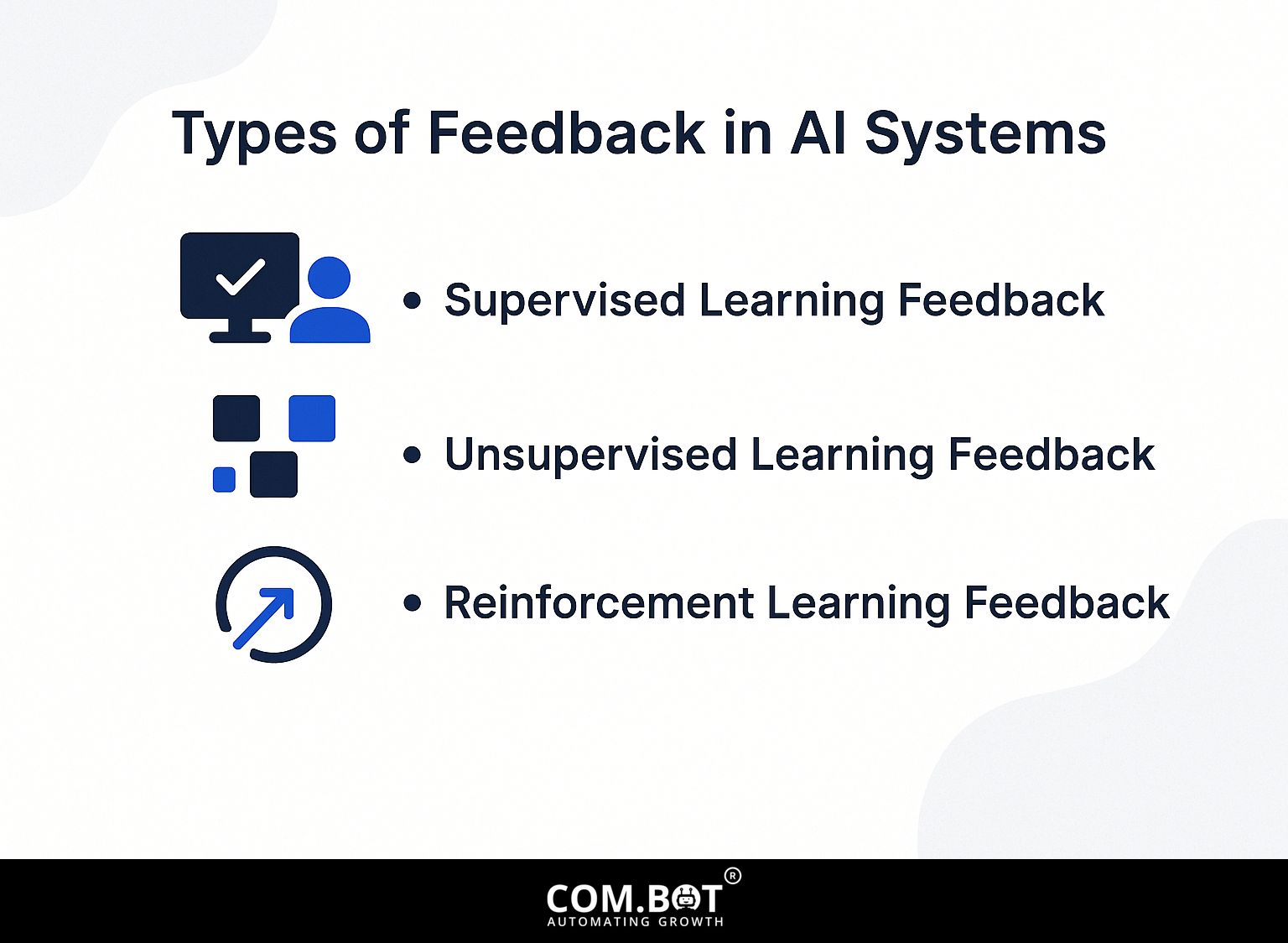
AI systems learn through three main types of feedback: supervised learning, unsupervised learning, and reinforcement learning.
Each method is used for different goals, and understanding the importance and improvement techniques of feedback can enhance the effectiveness of AI systems, making them more responsive and adaptive.
Supervised Learning Feedback
Supervised learning feedback involves using data that includes labels to teach models. This helps them make correct predictions based on the examples of input and output given.
In healthcare, for instance, algorithms can be trained to identify diseases from medical images using labeled datasets where images are classified as ‘healthy’ or ‘diseased’. This application greatly improves diagnostic accuracy.
In customer support, sentiment analysis can be improved through labeled feedback, classifying customer interactions as positive, neutral, or negative.
Measures like accuracy, completeness, and F1 score are important for checking how well a model works. They make sure the model performs reliably in everyday situations.
Unsupervised Learning Feedback
Unsupervised learning feedback helps AI systems find patterns and structures in data that hasn’t been labeled, providing information without specific goals set in advance.
This method is especially helpful in data analysis and spotting unusual patterns, where analysts can find hidden trends.
For instance, clustering algorithms like K-means can group similar data points, helping to highlight unusual patterns.
Tools such as Label Studio facilitate data annotation, enabling users to improve the quality of the training set by identifying outliers.
By using these tools, organizations can improve their data analysis skills while needing fewer labeled datasets, leading to clearer results.
Reinforcement Learning Feedback
Reinforcement learning feedback employs a reward-based system where AI agents learn optimal actions through trial and error, refining their capabilities over time.
This involves both positive and negative feedback loops.
In self-driving car systems, when the vehicle successfully avoids an obstacle, it receives positive feedback, encouraging the AI to repeat the action. On the other hand, if the vehicle hits something, it gets negative feedback, causing it to change its approach.
As the agent learns, it gets better at moving through difficult spaces, which increases safety and makes tasks faster. Similar methods are used in gaming AI, where programs learn from how players interact to improve the gaming experience.
Importance of Feedback for AI Improvement
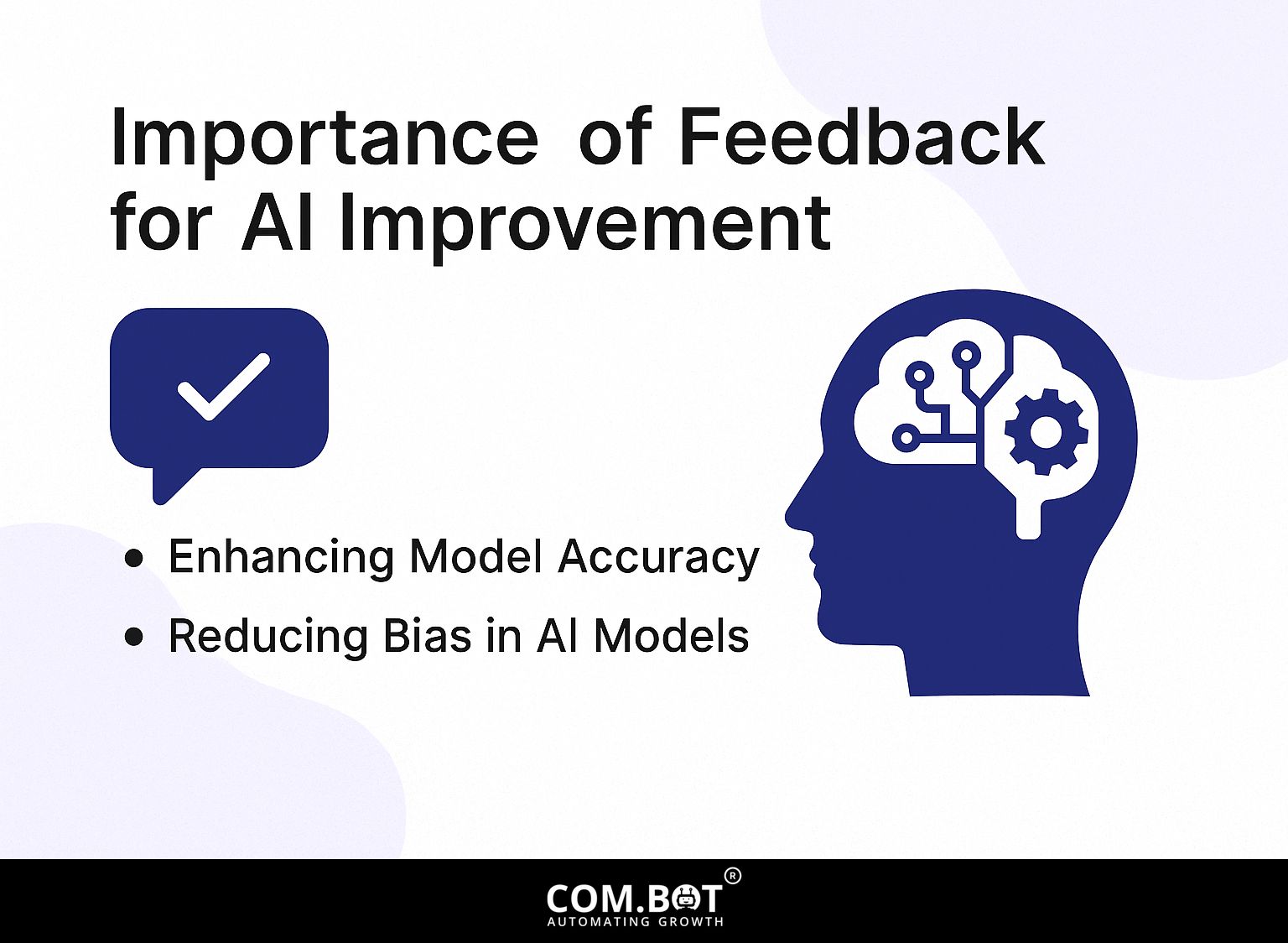
Feedback systems are important for improving AI model accuracy and cutting down biases, which helps AI performance get better over time. One of our most insightful case studies demonstrates how structured feedback loops can significantly enhance these systems.
Enhancing Model Accuracy
Implementing feedback effectively can improve model accuracy by as much as 30%, significantly impacting AI outputs in real-world applications.
To improve how well a model performs, use techniques like A/B testing and gathering feedback from users.
For example, a healthcare AI system had tools to check how correct and reliable its diagnoses are. A key example involved a radiology AI where ongoing feedback from radiologists improved the model, increasing accuracy from 85% to 92%.
By using structured performance metrics and expert user feedback, ongoing changes can make the AI more effective, showing significant improvements and practical use.
Reducing Bias in AI Models
Using feedback methods can help lessen thinking errors in AI models, leading to fairer results in various uses.
For instance, Google’s image recognition AI improved significantly after integrating user feedback. Initially, biases were found in the way the model classified images of humans, often misidentifying individuals from different ethnic backgrounds.
By actively soliciting input from users and regularly updating the training dataset based on this feedback, the team was able to correct these biases. Implementing tools like Fairness Toolkit or AI Fairness 360 can help developers measure and mitigate bias in their algorithms, ensuring a more balanced representation in AI outcomes.
Techniques for Collecting Feedback
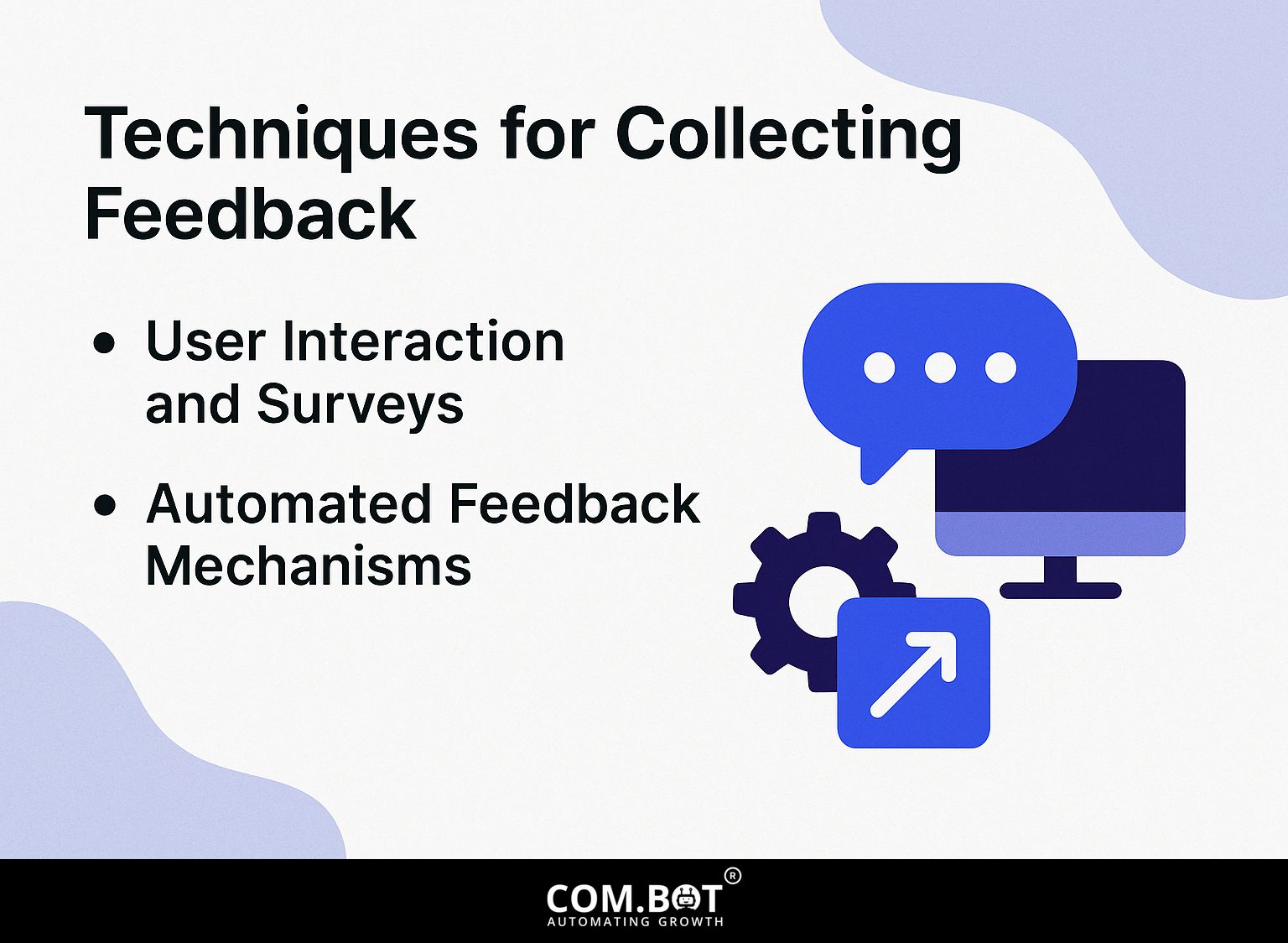
You can gather feedback in AI systems by using different methods, such as user input and automatic tracking tools. This approach aligns with techniques discussed in our article on Feedback for AI Systems: Importance and Improvement Techniques, emphasizing the significance of continuous improvement.
User Interaction and Surveys
User interactions and surveys are powerful tools for gathering qualitative feedback, enabling AI systems to better understand user needs and preferences.
To carry out user surveys well, begin by clearly outlining your objectives. Tools like SurveyMonkey (starting at $25/month) or Google Forms (free) can be used to make your surveys.
Use both open-ended and scaled questions to completely understand. Promote your survey through social media or email newsletters to maximize participation.
Look at the responses you’ve gathered to find patterns and useful information. Apply this feedback to make AI algorithms or user interfaces better, ensuring your system adjusts to match user preferences.
Automated Feedback Mechanisms
Automated feedback systems, such as monitoring tools, allow AI to receive immediate data with minimal human input.
Tools like Google Analytics and Hotjar are excellent for capturing user engagement.
Google Analytics tracks metrics such as page views, session duration, and user demographics, providing detailed reports on how visitors interact with your content. Hotjar complements this by offering heatmaps and session recordings, helping you visualize user behavior.
By implementing these systems, businesses can identify areas for improvement in their websites and digital strategies. Check the data often to change your content and improve how users interact with it successfully.
Implementing Feedback Loops
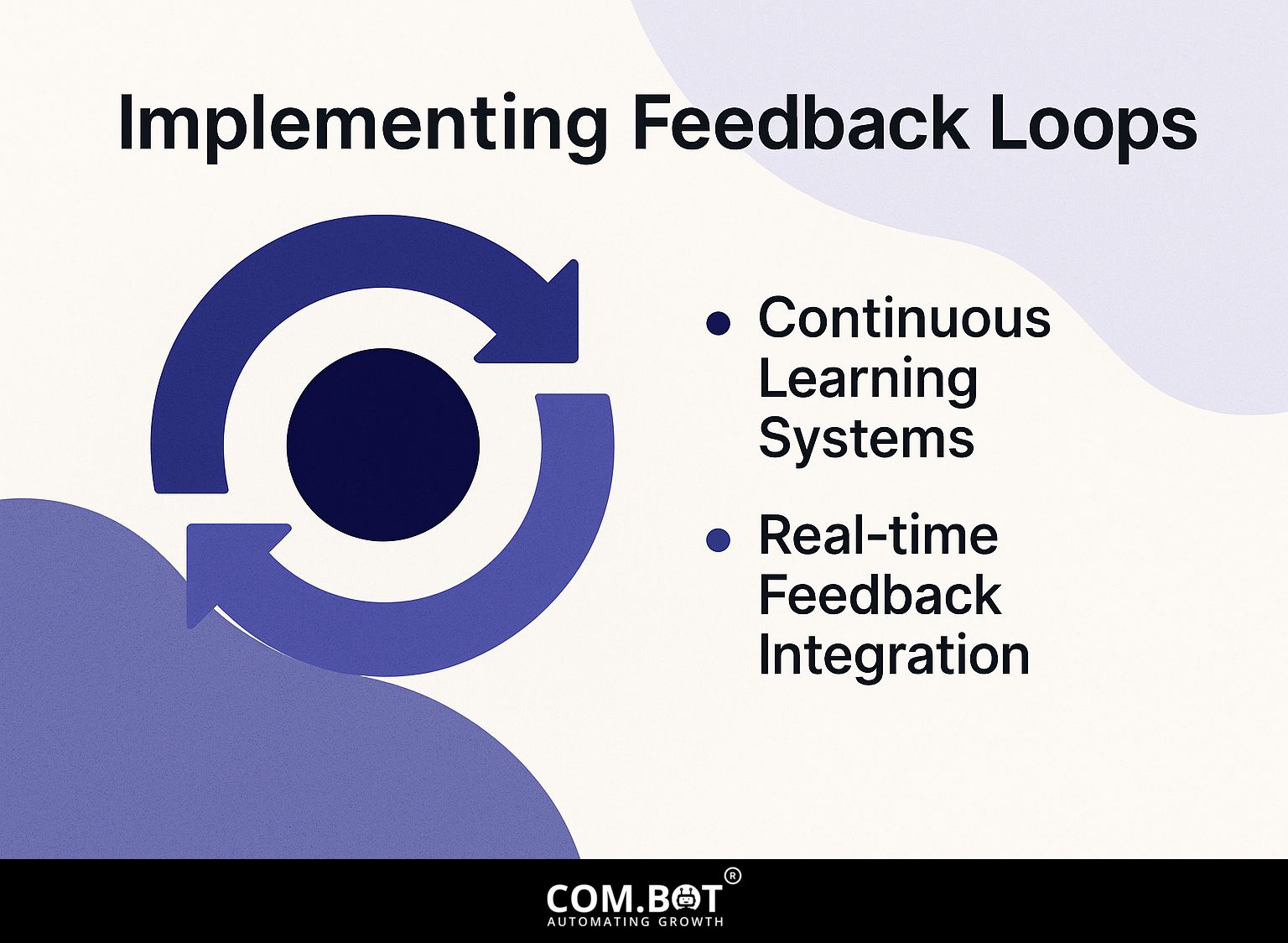
Creating effective feedback systems is important for developing learning models that adjust to user actions and improve with experience.
Continuous Learning Systems
Continuous learning systems use feedback loops to keep improving AI models, dealing with model drift and adjusting to new data.
To set up these systems, begin by creating a strong feedback system that records how users interact with the AI.
For instance, use tools like Google Analytics to track user behavior and identify patterns. Update models often with this data to keep them aligned with current trends.
Addressing model drift involves scheduling frequent evaluations of model performance against a validation dataset. Use methods like transfer learning to modify for new data while keeping existing knowledge.
With consistent monitoring and adjustment, you can significantly improve your AI’s responsiveness and accuracy.
Real-time Feedback Integration
Including real-time feedback systems can significantly improve user interaction and system performance, enabling rapid adjustments.
For effective implementation, consider using tools like:
- Google Analytics for user interactions
- Hotjar for heatmaps
- UserTesting for direct feedback
For instance, Google Analytics enables you to track user behavior in real-time, helping pinpoint areas needing improvement. Meanwhile, Hotjar’s heatmaps illustrate where users click most frequently, informing design modifications. Platforms like UserTesting hold live sessions to collect feedback on what users like.
By using these tools, you can quickly change features based on real user feedback, building a more responsive AI system.
Challenges in Feedback Implementation
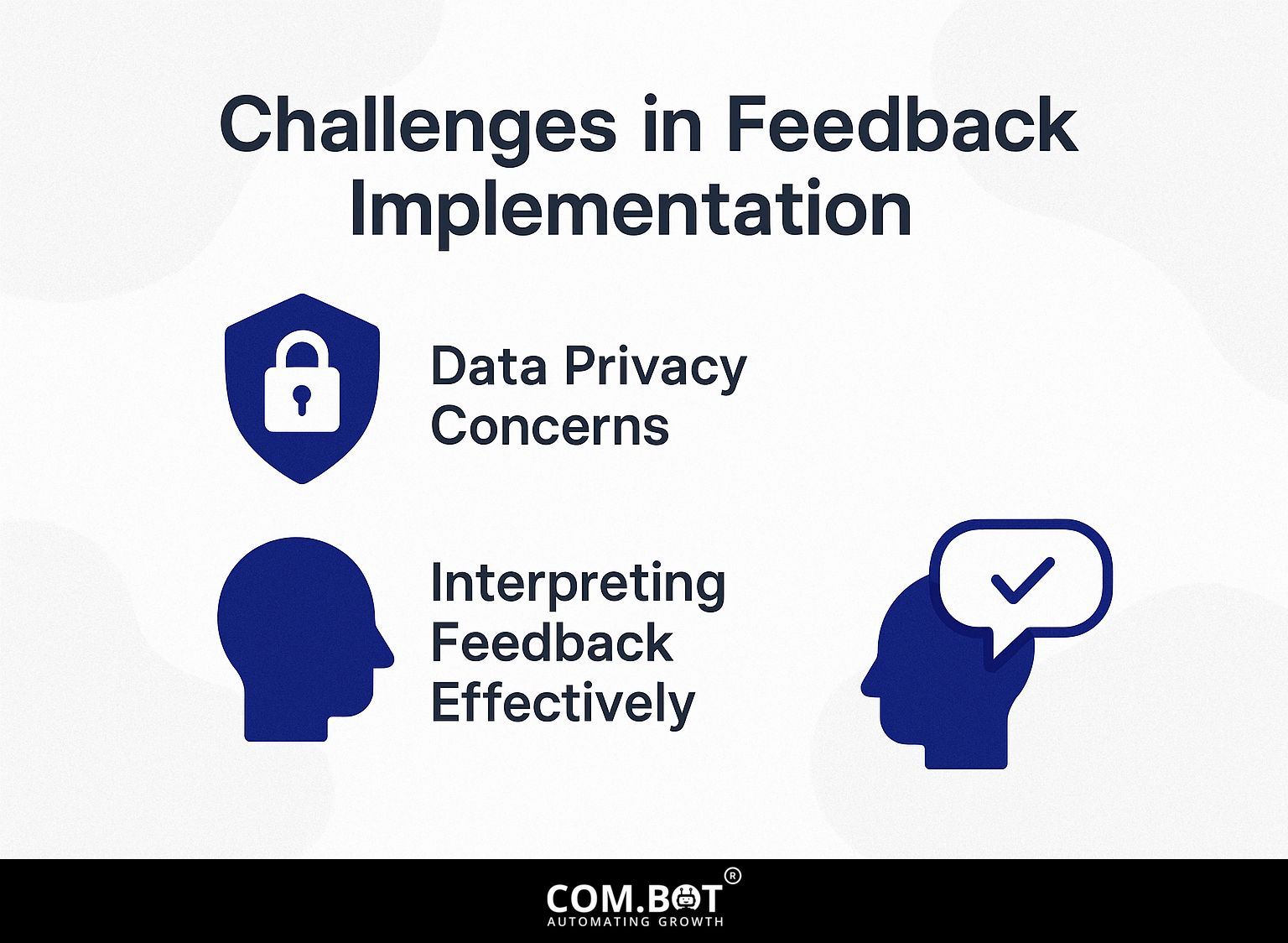
Giving feedback to AI systems can be tricky because of worries about data privacy and making sure the information is interpreted correctly. Curious about how feedback mechanisms can be improved for AI systems? Our detailed framework explains the key techniques.
Data Privacy Concerns
Concerns about data privacy are important when collecting feedback. It’s necessary to use reliable methods to safeguard user information and comply with rules.
To effectively address data privacy, start by employing anonymization techniques, such as stripping personally identifiable information (PII) from feedback data.
Next, implement strong encryption protocols to protect data during transmission and storage. Getting permission from users is important; make sure you have clear and easy-to-understand forms explaining how their information will be used.
Frequently check your processes to match new rules, like the GDPR, to stay compliant and gain your audience’s trust.
By focusing on these steps, you can protect user privacy while collecting useful information.
Interpreting Feedback Effectively
Careful analysis of feedback is necessary because mental biases can skew the results and lead to wrong conclusions if not handled correctly.
To properly understand feedback, have a knowledgeable person check the information to find important details that might be missed.
Use data visualization tools like Tableau or Google Data Studio to make clear and easy-to-understand charts of feedback trends. For instance, a heatmap can help identify common areas of concern among respondents, while bar charts can highlight shifts in sentiment over time.
By using these strategies, you make things clearer and lower the chances of bias affecting your analysis.
Frequently Asked Questions
What is the importance of feedback for AI systems?
Feedback is important for AI systems because it helps them learn and do their tasks better. AI systems can use feedback to continually update and get better, resulting in more accurate and useful outcomes.
How does feedback help in improving AI systems?
Feedback helps AI systems find and fix mistakes or biases in their algorithms. It also helps them learn what users like and make needed changes to improve how well they work.
What are some techniques for gathering feedback for AI systems?
Some techniques for gathering feedback for AI systems include user surveys, user testing, feedback forms, and data analysis. These methods help to collect and analyze feedback from users to improve the system’s performance.
Why is it important to have a diverse set of feedback for AI systems?
A diverse set of feedback helps to identify any biases or limitations in the AI system. It helps make the system work well for different users, making it easier to use and more precise.
How can AI systems make sure the feedback they get is good?
AI systems can apply several quality checks, like checking the origin of feedback, examining how relevant and consistent the feedback is, and using feedback from different sources to confirm its accuracy and effectiveness in making the system better.
What are the advantages of regularly asking for feedback on AI systems?
Regularly asking for opinions on AI systems helps them get better and change over time. It keeps the system updated and helpful, providing users with a better experience and more accurate results.
